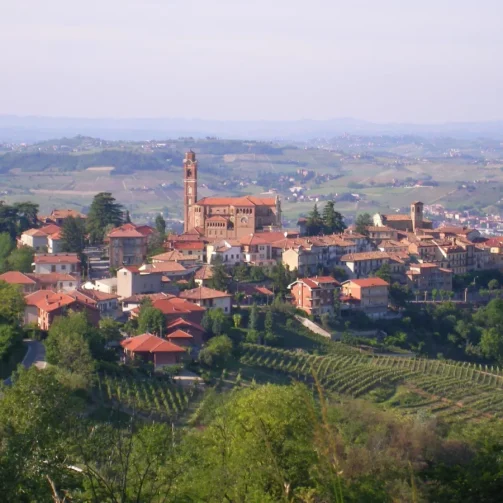Before the lower Langa collides with the last bangs of Monferrato, Castiglione Tinella appears in the high view.
We are still in the province of Cuneo, albeit at the extreme borders; the city of Cuneo is about 90 km away, as is Turin, while 25 km separate us from Alba and Asti.
The municipality is situated at an elevation of 408 meters and has an area of 12 sq. km on which the approximately 900 inhabitants reside.
It consists of a central built-up area and several hamlets; in one of these is the shrine dedicated to Our Lady of Good Counsel.
The territory is totally hilly and is, for more than 90 percent of the agricultural area, cultivated with vines; this fact makes it one of the most wine-growing municipalities in Italy.
Three major ridges branch off from its highest point, divided by two fortresses called “badie,” which slope in the direction of the Tinella and Belbo valleys; other minor ridges branch off from these.
Among the vineyards, the remaining patches of forest, called “rive,” and the rare poplar groves, offer the precious Alba truffle: the “autumnal” protagonist of our cuisine.


